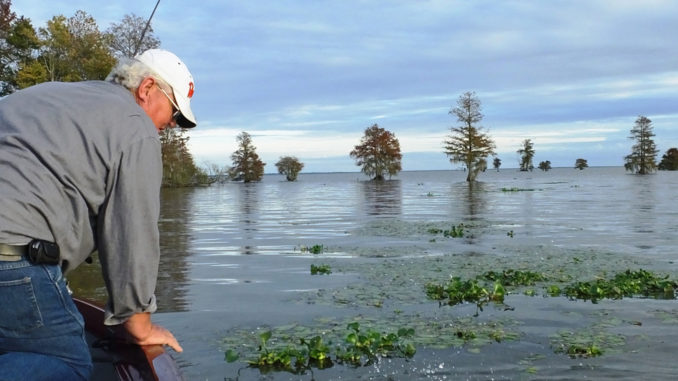
Bass are on the way and fishermen need to head to the shallows in South Carolina’s sprawling Santee Cooper reservoirs this month.
The vast amount of shallow water in the Santee Cooper lakes has distinct advantages for early season largemouth bass fishing. Lake Marion and Lake Moultrie have experienced a strong revival in recent years, thanks to abundant natural vegetation and productive bass recruitment, including multiple vigorous year-classes.
The improved vegetative cover has enabled a lot of fish to survive and thrive, and February begins the annual spring migration of bass toward the shallows.
Linwood Thornhill of Pineville has fished both lakes for more than 60 years, guiding anglers for 50-plus years. Now 70, he has always made bass fishing a priority and has earned the reputation of being a great tournament angler as well as a guide. He said the bass fishing has trended very strong in recent years, and he expects 2016 to be a very good year. And February is a great time to begin bass fishing.
“I like February fishing for a variety of reasons, but one is, it’s just a great time to catch huge largemouth,” Thornhill said. “Big bass are caught throughout the year, but the early spring period from February through April ranks right at the top. When I thinking spawning fish and bass on beds, February is not at the top of the list, but bass are moving toward shallow water and becoming more willing to bite. The bass get progressively more active and shallow as the month progresses. When I get on strong, dependable patterns in late February, it’s easier for me to follow these fish as they make a big move to the shallows in March and April.
Thornhill guides for bass, as well as stripers and catfish, out of Blacks Camp on the Lake Moultrie end of the Diversion Canal. He said this location gives him easy access to both lakes, a consideration that can be a huge advantage during the early spring.
“Weather conditions dictate a lot about where bass are caught during February and even strongly influence where I can effectively fish,” he said. “Cold fronts will impact fish movements, and strong winds can quickly discolor the water and change a productive pattern. Very strong winds will basically eliminate some of the open-water fishing opportunities. Fishing both lakes provides me with reliable backup plans for the unpredictable weather conditions typical of February.”
Thornhill targets several different types of structure in February, and he said the slowly rising water temperature will prompt movement from the fish, generally toward the shallows. But cold fronts can bump them back for short durations.
“I’ll fish points, ledges on creek or ditch drops, mouths of backwater creeks and depressions or old ponds during February,” Thornhill said. “The areas I prefer are just a bit deeper than what I call shallow water, with the depressions being about 7 feet deep. Most of the depths I fish in February are in the 5- to 8-foot depths. But if weather extremes hit, I will go deeper in very cold weather and sometimes by late in the month, fish begin to get shallow if we have a good warming trend. This is a transition month for bass, so I have to remain adaptable.
“When weather turns bad and cold, especially early in the month, I’ll rely more on depressions, ledges and underwater points on drops,” he said. “I further refine my specific targets in these areas to individual stumps and logs.”
Thornhill prefers fishing larger creeks early in the year, saying they will produce throughout the month. The larger creeks, including some in open water that cut through flats, have shallow ledges that drop into the deeper creekbed. He also fishes intersections of smaller creeks and ditches with the main creek. The water also gets progressively shallower further up the creek until it fans into a shallow flat. He said this transition from deeper to very shallow water is loaded with February bass catching opportunities.
“When I haven’t fished in a few days, this is the type area I go to pattern fish,” he said. “From the junction of the creek with the main lake, the twists and turns in the channel winding though the flats toward shallower water create underwater points and steep drops. These open-water areas are often overlooked. Some of the underwater points and bends in the creek have plenty of stumps and logs to hold fish, along with the attraction of a depth change. These can be really good.
“I’ll fish from the back of the creeks toward deeper water until I find fish, or vice-versa, depending on prevailing weather,” he said. “At that point, I can usually begin to put a depth, lure and speed pattern on the fish and find similar areas holding fish.”
Over the course of the month, Thornhill will employ a variety of lures. One of his go to lures is the jig with a plastic crawfish trailer such as the “Ray’s Chunk.” Plastic worms are a prime part of his arsenal, as are Chatterbaits and crankbaits that get near the bottom in the depths he’s fishing.
Artificial lures are only one way to catch Santee Cooper’s trophy bass in February. Some anglers employ the popular Florida tactic of using live bait to hook hawg bass.
Guide Kevin Davis, who owns Blacks Camp, has worked on this technique in recent years because of the great shallow cover and big bass available in both lakes.
“Using live bait for big bass is nothing new to Lake Marion and Lake Moultrie, I know several anglers who make great catches in both lakes using live bait,” he said. “I started doing it after a trip to Lake Toho in Florida with a guide friend of mine, Jay Turner. I realized we had ideal habitat here for that type fishing and plenty of big bass.
Davis said the key is to focus on the right target area and have the right boat and tackle setup. He will often anchor and work a specific area for big bass.
“I don’t expect a lot of bites in cold weather, but I’m targeting a few really big fish, so my patience level adapts to letting the live bait impart the action,” he said. “It’s an excellent way to catch a trophy fish in February, take pictures and release the fish to spawn later in the spring. But we enjoy days when the action is fast-paced on big fish using live bait.”
The live-bait rig he uses is simple but effective. He typically uses live shiners — the larger the better — as well as live herring if shiners are hard to find. Depending on the size of bait, he will use a 3/0 or 4/0 circle hook and hook it in the tail so it swims better. When anchored, he will often use a 4-inch float on some rigs, and some he simply free-lines. He does not use any weight, so the bait swims as naturally as possible. He spools 10-pound braided line on spinning reels.
“Spinning reels are easier to use when casting live bait,” he said. “Shiners are more durable than herring, and that’s a plus for them. Herring are more delicate to keep alive, but make no mistake, largemouth love herring.”
Davis primarily targets three basic areas with live bait. His favored places are the many depressions that drop from shallow water down to 5 to 7 feet deep. This is an anchored-type setup, and these areas are particularly good early in the month. As the month progresses, Davis will fish humps in water 3 to 6 feet deep, especially those littered with stumps and woody cover. This is also best fished from an anchored position.
The third method can be fished from an anchored position or a slow-moving boat.
“I’ll work along grass lines that drop quickly into deeper water,” he said. “I let the bait swim to the edge and poke around small cuts and points in the grass. In this case, I do not use a float.
“Any of these areas can produce throughout the month,” he said. “A warm winter will have fish on stumpy humps sooner than on a cold winter. Or it can be a little later as it was in the very cold winter in 2015.”
Davis said live bait is a great way to find bass, even if fishermen prefer to artificial lures. Once bass are found in an area, they can switch to artificial lures.
“I guide a lot for striper, crappie and catfish, so I don’t get to keep up with the bass as some do,” Davis said, “but I can use this tactic and usually find fish quickly and then catch them on worms, jigs and crankbaits.
“Or I may just fish the day with live bait,” Davis said. “It is relaxing but can produce tremendous excitement. My experience has been if the live bait gets within 10 feet of a bass, that bass is going to eat it. Fishermen experiencing this for the first time are quite surprised at how exciting this can be.”
Both Davis and Thornhill agree that the bass fishery on the Santee Cooper lakes has returned to a high level, for quality and quantity of bass.
Davis said the resurgence of native grass and creel and size limits have helped.
“I watch these things closely, and I’m seeing a lot of small bass in the lakes, as well as a wide variety of sizes on up to trophy-sized fish,” Davis said. “I think we’re in a very good place with the bass fishing right now.”
Thornhill said he catches a lot of largemouth in the 5- to 10-pound class, and that makes for spectacular fishing.
“I seldom find mixed sizes of bass in February,” he said. “If I catch a few small fish in a short span, I’ll move to find bigger fish. When I get on an area loaded with big fish, I stay in that area. On a good day, it’s not unusual to catch multiple really good fish in an area. That’s one big reward for fishing during February.”
Thornhill said a cold-weather mindset will help fisherman catch more bass at Santee Cooper during February, in addition to understanding the how, when and where.
“Recognize that fishing may not be fast-paced during February when the water is still cold,” he said. “Make a good plan, adapt as needed, but stick with the plan and give it time to produce. Often I’ll hit a spot, or the timing will be right, and I’ll catch a lot of my fish for the entire day in a short window of time. That’s often because I’m steady fishing. A lot of fishermen will jump from one location to another and can miss an active period.”
Thornhill said another important element is to fish lures and places with confidence.
“Bass are often sluggish, and I have to throttle back on moving around, reduce my boat speed as I work an area and especially slow my lure presentation to catch fish,” he said. “That’s often difficult to do because we all want to catch big bass. But during this time, I’ve found that it’s best to give fish plenty of time and opportunity. Slow things down and stick with the process.”
DESTINATION INFORMATION
HOW TO GET THERE — The Santee Cooper lakes are just a hop, skip and a jump from I-26 between Columbia and Charleston, with Lake Moultrie best accessed via SC 6 and US 52 and Lake Marion best accessed via I-95, SC 6 and SC 45. For a complete list of public boat ramps, visit www.scgreatoutdoors.com/hb-lakes.html
WHEN TO GO — Largemouth bass in the Santee Cooper lakes will begin their first move toward the shallows in February, becoming more active and feeding more as spring approaches. Great fishing will last through April.
BEST TECHNIQUES — Locate the channels of big creeks where they meet the main lake and work your way back, fishing the edges of the channel and up on flats, looking for fish in 5- to 7-foot depths around depressions and good cover. Crankbaits, Chatterbaits, plastic worms and live shiners or herring can be very productive on fish moving steadily toward the shallows.
FISHING INFO/GUIDES — Linwood Thornhill, Kevin Davis, Black’s Camp, 843-753-2231; See also Guides and Charters in Classifieds.
ACCOMMODATIONS — Black’s Camp, 843-753-2231; Santee Cooper Country, 803-854-2131, www.santeecoopercountry.org.
MAPS — Kingfisher Maps, www.kfmaps.com; Fishing Hot Spots, www.fishinghotspots.com.

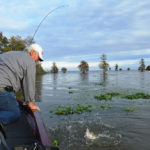
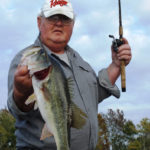
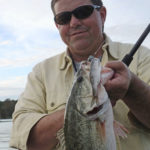
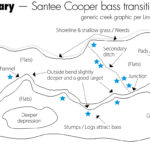



Be the first to comment